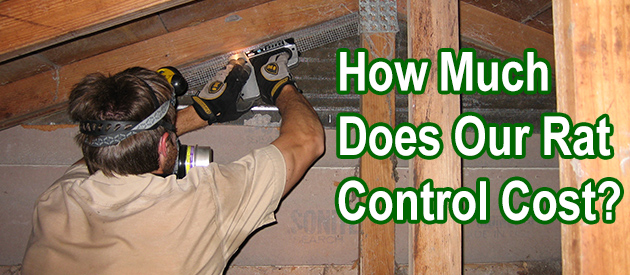Lackawanna County, Scranton Rat Control Situation:
Hello, I've seen your website and wanted to thank you for supplying such helpful information. Are you located in Wilkes Barre? Is so, do you ever accept jobs in Scranton? Scranton is about 1.5 hours north of Allentown. Even if you don't accept jobs out of your home area, I wondered if you would give me some information about cost and details as to what the service includes.I have rats in my attic. I have seen an entry place they use at the edge of my screened porch. Several months ago I also had some rats inside my house. Before I realized That I had a rat problem, I had the habit of leaving my sliding glass door open for the breeze. I believe the rats entered that way and/or via a ceiling vent in my laundry room that has been bent. I was able to get rid of the rats in the house but not the rats in the attic. I can hear them and I periodically see one or two when I go on my porch. That is how I know one of the places they are entering the attic. I will need these services: 1. Finding and sealing entry holes 2. Setting snap traps for any rats that are in the attic 3. Removal of dead rats caught in traps 4. Decontamination of attic areas where rats have been 5. Decontamination of the area of the house where I think they were hiding. I know it is not possible to give an exact quote without seeing the house/attic, but I do need a ball park figure for the services above because I am retired and live on a fixed income. I will need to know how much to budget for having the services done. Thanks in advance for the information.
I moved into an apartment complex a week and a half ago. A nice quiet one on the outside looking in. First issue were flies piling in one window so maintenance sealed the window. Then lizards under my sink in the bedroom. Now rats are using the restroom throughout the kitchen and living room. One hole was patched behind the toilet in my bedroom last week. I was awakened just now by the rat trying to chew through the patch. I'm exhausted by all of this. If maintenance patches all of the holes that I can find to point out then what happens to the living things in the wall? I signed a lease for 13 months, so I definitely don't want dead things in the walls while I'm here. I tried glue traps they won't walk on them. I just feel that being a new tenant yet to cook a meal here that this is a lot to deal with. Thanks in advance for any advice.
Scranton Rat Control Tip of The Week
Norway Rat Biology
The Norway rat is typically nocturnal. It is a good swimmer; however, unlike the related black rat, it is a poor climber. Norway rats burrow well, and regularly uncover broad tunnel systems.
Rats are equipped for creating ultrasonic vocalizations, both as grown-ups and babies. They may likewise transmit short, high frequency, socially-prompted vocalization during interaction with different rats or animals. This call most takes after a trilling sound but is undetectable to human ears. Rats can discernibly be heard through calls sounding like squeaks when they are in trouble.
These rats are omnivores. This implies they can eat both plants and animals. As predators, rats are opportunistic.
The Norway rat can breed consistently if the conditions are reasonable, and a female can deliver up to twelve litters in a year. The gestation period is just 21 days, and litters can number up to fourteen, albeit smaller litters are common. In this way, the rat population can increase rapidly. Rats have a lifespan of around three years, yet regularly live less than one year.
Norway rats live in enormous hierarchical groups, either in tunnels or subsurface places, such as sewers and basements. When food is hard to come by, the rats lower in the social order are the first to die. If a large portion of a rat populace is eliminated from a zone, the rest will expand their reproductive rate, and rapidly reestablish the old populace level. This makes it imperative to have a plan to get rid of the entire rat population on your property if an infestation occurs.


